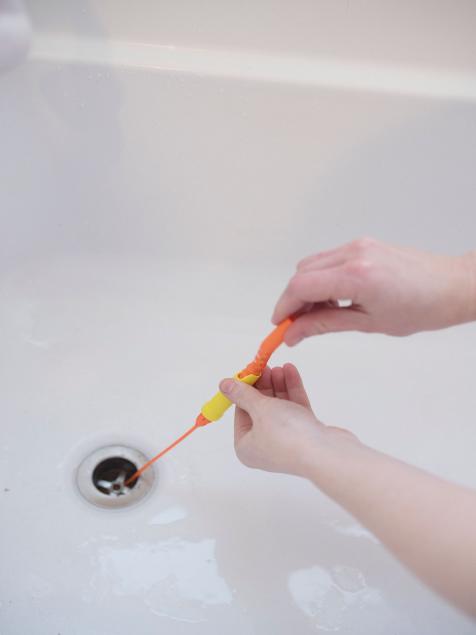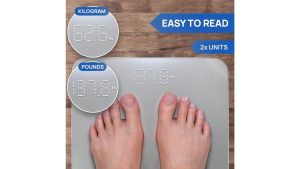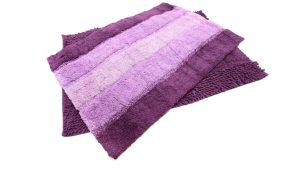How to Clean Out Shower Drain: Quick & Easy Tips

To clean out a shower drain, remove the drain cover and use a drain snake or plunger. Flush with hot water and vinegar.
A clogged shower drain can be a nuisance, causing water to pool and unpleasant odors. Regular maintenance helps prevent blockages and keeps your shower functioning smoothly. Hair, soap scum, and debris often accumulate in the drain, leading to slow drainage.
Cleaning your shower drain doesn’t require professional help; you can do it with a few simple tools. This guide will walk you through effective methods to clear your shower drain, ensuring it remains free-flowing and odor-free. Regular cleaning not only extends the life of your plumbing but also provides a more pleasant shower experience.
Introduction To Shower Drain Maintenance
Keeping your shower drain clean is essential. A clean drain prevents clogs and ensures smooth water flow. Regular maintenance can save you from costly repairs. Let’s explore the importance of regular cleaning and the signs of a clogged drain.
Importance Of Regular Cleaning
Regular cleaning of your shower drain helps prevent blockages. Hair, soap scum, and dirt can build up over time. Cleaning the drain often ensures water flows freely. It also prevents bad odors from forming.
By maintaining a clean drain, you also protect your plumbing system. This can save you from expensive repairs. A little effort now can prevent big problems later.
Signs Of A Clogged Drain
Recognizing a clogged drain early can help you address the issue quickly. Here are some common signs:
- Water drains slowly.
- Unpleasant smells come from the drain.
- You hear gurgling sounds.
- Water pools around your feet during a shower.
If you notice any of these signs, it’s time to clean your shower drain. Regular checks can help you catch problems early.
Initial Preparations
Cleaning out a shower drain can seem daunting. Proper preparation can make the task easier. Start by making sure you have everything you need. Follow these steps to get ready.
Gathering Necessary Tools
Gather all the tools before you begin. Having everything ready will save time.
- Rubber gloves – Protect your hands from grime.
- Plunger – Useful for dislodging clogs.
- Drain snake – Helps to remove deeper blockages.
- Bucket – Catches any debris or water.
- Old toothbrush – Good for scrubbing the drain cover.
Safety Precautions
Safety is important. Make sure to follow these precautions.
- Wear gloves – Keeps your hands clean and safe.
- Turn off water – Prevents accidental splashes.
- Good ventilation – Avoids inhaling any harmful fumes.
- Use proper tools – Avoid makeshift tools that might damage the drain.
By following these initial preparations, you ensure a smooth and effective drain-cleaning process. Gather your tools and take safety precautions to get started.
The Manual Cleaning Method
Cleaning out a shower drain manually can seem like a daunting task. But with the right steps, it becomes straightforward. This method is effective for removing hair, soap scum, and other debris. Follow these steps to ensure your shower drain runs smoothly.
Removing The Drain Cover
First, you need to remove the drain cover. Most drain covers can be unscrewed or pried off. Use a screwdriver or a flat tool to do this. Be gentle to avoid damaging the cover or the drain.
| Tool | Usage |
|---|---|
| Screwdriver | Unscrew the cover |
| Flat Tool | Pry off the cover |
Extracting Visible Debris
Once the cover is off, you can start removing visible debris. Use a pair of gloves to keep your hands clean. Grab any hair, soap scum, or other debris you can see.
- Wear gloves to protect your hands.
- Use a flashlight for better visibility.
- Remove hair and soap scum first.
For deeper debris, use a wire hanger or a drain snake. Straighten out the hanger and create a small hook at the end. Insert it into the drain and pull out any hidden gunk.
- Straighten out the wire hanger.
- Create a small hook at one end.
- Insert the hook into the drain.
- Pull out the hidden debris.
By following these steps, you can keep your shower drain clean and clog-free. This method is both simple and effective, ensuring your shower remains in top condition.
Natural Cleaning Solutions
Cleaning your shower drain can be a hassle, but natural cleaning solutions make it easy and safe. These methods use everyday items found in your home. They are environmentally friendly and effective. Let’s explore two powerful techniques: the Baking Soda and Vinegar Technique and the Boiling Water Flush.
Baking Soda And Vinegar Technique
The baking soda and vinegar method is a classic. It’s simple, effective, and uses items you already have.
- Step 1: Remove any visible debris from the drain.
- Step 2: Pour 1/2 cup of baking soda down the drain.
- Step 3: Follow with 1 cup of white vinegar.
- Step 4: Cover the drain with a plug or cloth to contain the reaction.
- Step 5: Wait for 15 minutes.
- Step 6: Flush with hot water.
The mixture will fizz and bubble, breaking down grime and clogs. This method is safe for all types of pipes.
Boiling Water Flush
The boiling water flush is another easy and natural way to clean your shower drain. It dissolves soap scum and loosens hair clogs.
Boiling water helps clear minor blockages and keeps the drain clean. It’s a quick and easy solution for maintenance.
| Step | Action |
|---|---|
| 1 | Boil a pot of water. |
| 2 | Carefully pour the boiling water down the drain. |
| 3 | Repeat if necessary. |
Chemical Cleaners: Pros And Cons
Cleaning out a shower drain can be a daunting task. Chemical cleaners offer a quick solution. However, they have their own set of advantages and disadvantages. Understanding these can help you decide whether to use them or not.
Choosing The Right Product
Several chemical cleaners are available on the market. Choosing the right product is crucial for effective cleaning. Look for products labeled specifically for shower drains. These usually contain strong chemicals like sodium hydroxide or sulfuric acid.
Read the labels carefully. Ensure the product is safe for your type of plumbing. Some chemicals can corrode pipes, especially if they are old or made from certain materials.
Consider the environmental impact. Opt for eco-friendly products if possible. These are less harmful to the environment and safer for your household.
Application Guidelines
Before using a chemical cleaner, wear protective gear. Gloves and goggles are essential. These chemicals can be harmful if they come into contact with your skin or eyes.
Follow the instructions on the product label. Do not use more than the recommended amount. Excessive use can damage your pipes and create toxic fumes.
Pour the cleaner slowly into the drain. Allow it to sit for the specified time. This usually ranges from 15 minutes to a few hours. Do not use the shower during this time.
After the waiting period, flush the drain with hot water. This helps to remove any residual chemicals and clear the blockage.
| Pros | Cons |
|---|---|
| Quick and easy to use | Can be harmful to pipes |
| Effective for tough clogs | Not eco-friendly |
| Widely available | Requires safety precautions |
Plunging And Snaking
Cleaning out a shower drain is essential to prevent clogs and keep water flowing smoothly. Two effective methods are plunging and snaking. Each method has its unique steps and tools that make the job easier.
Using A Plunger Effectively
A plunger is a simple tool that can dislodge clogs in your shower drain. Follow these steps to use a plunger effectively:
- Fill the shower with enough water to cover the plunger’s cup.
- Place the plunger over the drain, ensuring a tight seal.
- Push down and pull up the plunger several times.
- Check if the water starts to drain. Repeat if necessary.
Operating A Drain Snake
A drain snake, also known as an auger, is useful for tougher clogs that a plunger can’t handle. Here’s how to operate a drain snake:
- Insert the snake’s tip into the drain.
- Turn the handle clockwise to push the snake further down the drain.
- Continue turning until you feel resistance.
- Rotate the snake and push gently to break up the clog.
- Pull the snake out and dispose of any debris.
Using these methods can help you keep your shower drain clear and functional. Regular maintenance prevents larger problems down the line.
Maintenance Tips To Prevent Future Clogs
Keeping your shower drain clear is essential for a smooth bathing experience. Regular maintenance helps to avoid annoying blockages. Here are some effective tips to prevent future clogs.
Regular Flushes
Regular flushes are crucial for maintaining a clean drain. Pour hot water down the drain once a week. Hot water helps to dissolve soap scum and other residues. This simple habit can significantly reduce the chances of clogs.
You can also use a mixture of baking soda and vinegar. Pour half a cup of baking soda, followed by half a cup of vinegar. Let it sit for 15 minutes, then flush with hot water. This natural solution helps to keep your drain fresh and clear.
Hair Catcher Benefits
Installing a hair catcher is a smart move. Hair is a common cause of drain clogs. A hair catcher traps hair before it goes down the drain. This simple tool can save you from frequent blockages.
Hair catchers are easy to install and clean. Remove the trapped hair regularly to ensure it works effectively. Here are some benefits of using a hair catcher:
| Benefit | Description |
|---|---|
| Prevents Clogs | Traps hair and prevents it from going down the drain. |
| Easy to Clean | Simple to remove and clean regularly. |
| Cost-Effective | Affordable and reduces the need for professional cleaning. |
Professional Help: When To Call A Plumber
Sometimes, cleaning your shower drain can be challenging. Persistent issues may arise that require professional help. Knowing when to call a plumber can save you time and stress.
Identifying Persistent Problems
Some problems don’t go away with simple fixes. If your shower drain is constantly clogged, it might be time to call a plumber. Frequent clogs could mean there’s a deeper issue.
If you notice a foul odor coming from the drain, this could indicate a serious problem. A plumber can identify and fix the issue efficiently.
Water backing up in your shower is another sign of persistent issues. This might suggest a blockage deep in the pipes.
Benefits Of Expert Intervention
Calling a plumber has many benefits. First, they have the right tools and expertise. This ensures the problem is fixed correctly and quickly.
Plumbers can also identify and fix hidden issues. They can detect problems that you might not see, saving you from future headaches.
Professional help ensures your shower drain is clean and functioning properly. This can prevent future clogs and maintain the health of your plumbing system.
Conclusion: Best Practices For Drain Health
Maintaining a clean shower drain is essential for a healthy home. Regular upkeep can prevent clogs and foul odors. This guide highlights the best practices for keeping your drain in top condition.
Routine Cleaning Schedule
Create a routine cleaning schedule for your shower drain. Consistency ensures your drain remains clog-free.
- Weekly: Remove hair and debris from the drain cover.
- Monthly: Use a mixture of baking soda and vinegar. Pour it down the drain to break down the buildup.
- Quarterly: Use a drain snake. This tool can remove any stubborn blockages.
Following this schedule can help you maintain a clear and functional drain.
Final Thoughts On Drain Care
Avoid pouring grease or oil down the shower drain. These substances can solidify and cause clogs.
Use a drain cover. This simple tool can catch hair and prevent it from entering the drain.
Flush your drain with hot water once a week. This helps clear minor blockages and keeps the drain clean.
Proper drain care ensures a clean and pleasant shower experience. Stick to these practices for the best results.
Frequently Asked Questions
How Do You Clean Gunk Out Of A Shower Drain?
Remove the drain cover. Use a drain snake or plunger to clear gunk. Flush with hot water and baking soda.
What Is The Best Way To Clean A Blocked Shower Drain?
Use a mix of baking soda and vinegar. Pour baking soda into the drain, then add vinegar. Wait 15 minutes, then rinse with hot water. For severe clogs, use a plumber’s snake or call a professional. Regular maintenance helps prevent future blockages.
How Do You Clear A Clogged Shower Drain?
Clear a clogged shower drain by removing the drain cover. Use a plunger or plumbing snake. Pour boiling water. Add baking soda and vinegar. Flush with hot water.
How Do You Remove Sediment From A Shower Drain?
To remove sediment from a shower drain, pour boiling water down the drain. Use a drain snake or plunger to clear blockages. Mix baking soda and vinegar, pour it in, and let it sit for 15 minutes. Flush with hot water.
Repeat as needed.
How Do I Unclog A Shower Drain Naturally?
Use a mixture of baking soda and vinegar. Pour it down the drain, wait 15 minutes, then flush with hot water.
What Tools Do I Need To Clean A Shower Drain?
You’ll need a drain snake, plunger, baking soda, vinegar, and hot water. Gloves are also recommended.
Can Hair Cause A Shower Drain Clog?
Yes, hair is a common cause of shower drain clogs. It can accumulate and block water flow.
How Often Should I Clean My Shower Drain?
Clean your shower drain once a month to prevent clogs and maintain optimal water flow.
Is Using A Drain Snake Effective For Clogs?
Yes, a drain snake is effective for removing hair and debris from shower drains. It can reach deep clogs.
Are Chemical Drain Cleaners Safe?
Chemical drain cleaners can damage pipes and are harmful to the environment. Natural methods are safer and effective.
Conclusion
Keeping your shower drain clean ensures a smooth and enjoyable shower experience. Regular maintenance helps prevent clogs and unpleasant odors. Follow these simple steps and enjoy a worry-free shower. A clean drain contributes to a healthier bathroom environment. Start implementing these tips today for a fresh and efficient shower experience.

:max_bytes(150000):strip_icc()/snake-a-clogged-shower-drain-2718775-hero-28269e681b8f46adb59c976f2d87944f.jpg)












